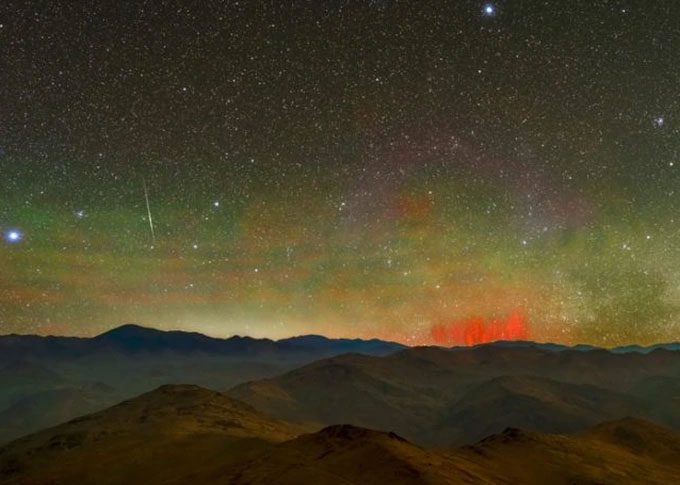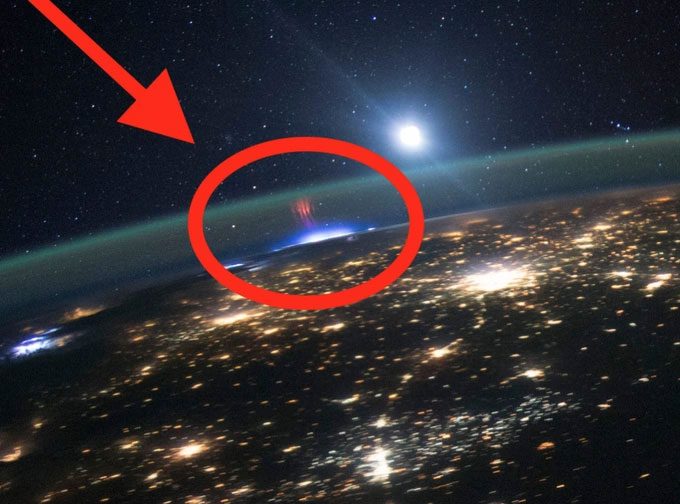A rare phenomenon has captured the attention of the scientific community and observers alike.

The strange bright red streak above the Atacama Desert has astonished many.
Recently, a photograph capturing the moment the sky above the Atacama Desert in Chile displayed a strange bright red streak has left viewers in awe. The scientific community has shown particular interest in this phenomenon due to its rarity.
According to explanations, this is actually a phenomenon known as upper-atmospheric lightning, which occurs due to discharges at high frequencies above thunderstorm clouds. They are typically triggered by a lightning strike originating from a thunderstorm cloud but directed upwards instead of down to the ground, sometimes occurring at altitudes between 50 to 90 kilometers.
According to Farmer’s Almanac, the scientific community has tended to overlook their existence, despite numerous pilots and observers describing and even capturing images of “upper-atmospheric lightning” when it appears.
Everything began to change in 1989 when scientists from the University of Minnesota in the United States witnessed and recorded images of this unusual type of lightning.
Since then, the concept of “upper-atmospheric lightning,” or “lightning from the upper atmosphere” has been established. It is named as such because these lightning strikes originate from the tops of clouds and extend to the lower edge of the atmosphere.

Upper-atmospheric lightning captured from outside Earth. (Photo: Getty).
Unlike regular lightning, upper-atmospheric lightning often connects in very thick clusters and releases an electrical charge about three times greater than that in the area between the cloud and the ionosphere.
Most of these special lightning events occur over a short duration, lasting only a few milliseconds. Occasionally, they are believed to cause unexplained incidents involving high-altitude vehicles or when they move upward to avoid tropical storms.
To explain the red light of this lightning, astronomers at the European Southern Observatory (ESO) suggest that during the day, sunlight knocks electrons out of nitrogen and oxygen in Earth’s atmosphere. However, at night, these electrons tend to recombine with atoms and molecules in Earth’s atmosphere, giving them that color.





















































